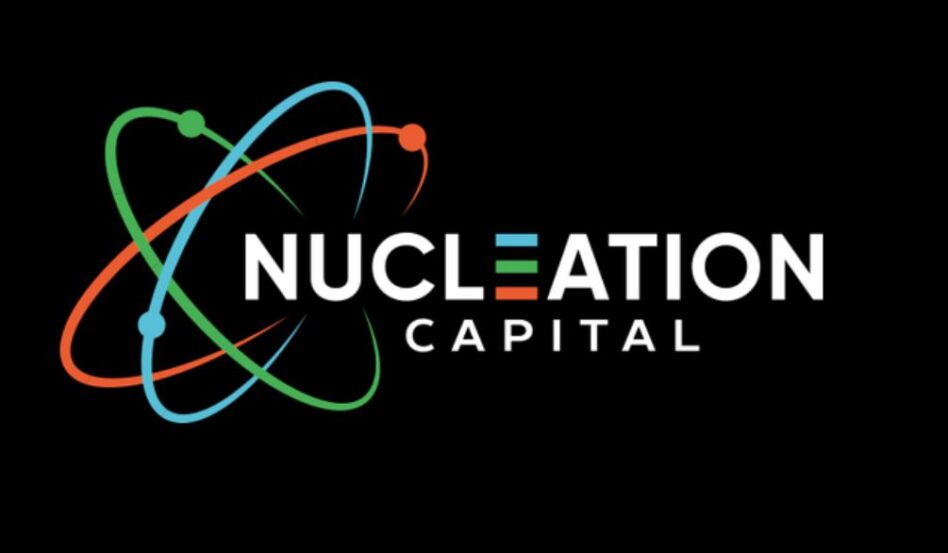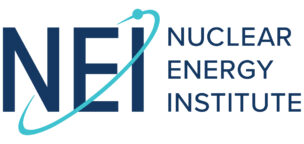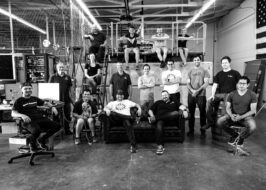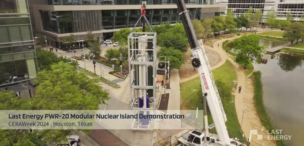Rod Adams, managing partner at advanced nuclear energy investment firm Nucleation Capital and author of the blog Atomic Insights, is as pro-nuclear as they come.
Adams started his career as a US nuclear submarine engineer officer, and has been pushing for widespread adoption of nuclear energy and the development of advanced reactors. He ran an advanced reactor company called Adams Atomic Engines, Inc., from 1993 to 2010, and never relented in his conviction that the US needs new, innovative nuclear solutions ASAP.
Today, he invests in advanced reactor technology, bullish on the industry’s potential to generate huge returns. He also publishes interviews as well as his own thoughts on the direction the nuclear energy industry is headed and how it’s perceived.
In an interview with Ignition, Adams explains why he has so much faith in the potential of nuclear energy and what he thinks needs to change before the US can really scale its nuclear energy infrastructure.
This interview has been edited for length and clarity.
Ignition: What makes you so bullish on the nuclear energy sector?
Adams: I’ve been interested in nuclear energy essentially, my whole life. I’m fascinated by the idea of producing massive quantities of heat and power using very tiny amounts of material and not producing any waste gasses, things that need to be released to the environment. And nuclear is able to store all of its waste at the same point where it’s generated. It’s able to drive submarines rapidly underwater, while still providing enough power to provide all the heat, electricity, fresh water, and clean air that a crew needs. So it’s an incredibly capable power source.
I grew up in the 1970s, where we had a major energy crisis, and we worried about the fact that we might not have enough energy to go around. We might not be able to drive cars for a long time. We might have to pay a lot more for everything because delivery was expensive, all that stuff, and that our economic future was being controlled by a small group of countries that didn’t like us very much. But that all that came together to tell me I needed to study nuclear endurance, and be involved.
Nothing I learned in the submarine force discouraged me about nuclear, except for the overhead that humans had put on the technology. Even in the Navy, we made it a lot harder than it needed to be. And there were many ways to improve that and that kind of motivated me.
In 2018 I was looking around the advanced reactor space, and I had been following it for 25 years by then. I met a lot of the people who were developing and talked to a lot of them on the Atomic Show, interviewing for Atomic Insights, and realized that we had a new tech sector here that was ready for investors. I wrote an article about that and had some investors from Silicon Valley contact me, and that’s how we formed Nucleation Capital.
It seems like nuclear energy has been going through—I don’t know what to call it besides a series of hype cycles. Interest rises and investors maybe get involved, governments maybe start funding things, and then interest dies off. Something happens and the cycle recedes again.
A lot of people say it’s a hype cycle, but if you’re outside the energy space, and talking to people in the general public, they’ve never even heard of this stuff. I mean, they don’t know anything about the nuclear renaissance.
But the key thing that happened is you can align the interest in nuclear with the cost of alternatives. In the 2000 to 2008 timeframe, the nuclear renaissance was looking like it was going to happen. The price of natural gas had gone from $2 per million BTUs in 1999 to $12 per million BTUs. In 2007. At that time, there was no such thing as cheap solar and cheap wind. Back then those were not really even financially—even on paper, they weren’t competitive.
So nuclear was really exciting to people. We were looking like we’re going to build a bunch of LNG (Liquid Natural Gas) import terminals in the US and be using imported natural gas from other places, and against those costs and those fuel options, nuclear is very competitive. In the 2004 to 2008 timeframe, people who owned nuclear plants were raking in the dough. So that was when we were interested.
Then the price of natural gas crashed, and I mean crashed. It went from $12 a million BTU to three and a half to two and a half to sub-two. And new nuclear can’t compete against that. Even existing nuclear has trouble competing against those prices, especially in markets where there was a lot of wind generation and when the wind blew, they dumped their power onto the grid. And there was so much power on the grid that the grid operators said, “Stop sending it to us.” They go to the nuclear plants, say “You guys dial back.” Of course nuclear plants as we’ve designed them so far don’t respond very well to changes in demand. They’re designed to operate still.
Do you think that the ability to design nuclear reactors so that you can adjust their output is an essential piece of the next generation of nuclear reactors?
They won’t all need to be variable, they won’t all need to be responsive. There’ll be a market for responsive power sources. I actually believe that one of the more overlooked ways to make them more flexible is to pair them with batteries, as battery technology improves. The battery gives you a storage, a warehousing possibility, where if the demand for electricity is not very high on the grid, you charge your batteries.
We can make nuclear cost and performance better. They’re really bad right now, too. There’s a lot of room for improvement.
You mentioned that during your time in the Navy overhead was the primary thing making these costs and timelines so bloated. Do you think that that’s still the case for the nuclear industry?
Yeah, absolutely. I mean, I certainly learned nothing during my time at BWXT that would challenge that. I mean, nuclear is simply another thermal power source. It should be roughly equivalent to coal or natural gas in terms of the equipment needed because it’s converting heat to electricity using the same machinery. And actually, you get rid of a lot of machinery because you don’t need to have the coal conveyors. You don’t need big ships coming in all the time. You don’t need to have the rail lines. You don’t need the scrubbers. You don’t need the waste pits. There’s all kinds of things you can get rid of. But we have layered so many things on top of the requirements for nuclear.
I want to talk a little bit about Nucleation Capital and your investing thesis. When you’re looking at this new batch of nuclear energy companies, what are you looking for when you’re deciding whether to fund a company that comes to you?
Our primary investment thesis is we need a transition of our energy system from primarily depending on hydrocarbons to primarily depending on clean energy sources. And that transition is going to change the way an awful lot of money is deployed. We don’t believe that there’s any need for any more investment in wind and solar from a company like ours. There’s plenty of other people who are doing that. We don’t see that as an opportunity for us. But when we look at advanced nuclear as a clean power source, as a clean tech investment, it’s under-appreciated, undervalued. And we believe that if we make our investments during this period, we’re getting good buys with a real opportunity for above average returns.
We look for teams that have real heft. We want people that can prove to us that they understand their market opportunity, that they have a business model that has a good chance of success. They have experience in the important aspects of finding customers, raising money, getting things built, getting things approved. All of those factors go into whether or not we want to invest in a company.
What sectors within the nuclear energy industry are you most excited to see progress in from an investment standpoint?
Fuel production. Enrichment is something that we’ve taken a hard look at, if there are better ways to enrich. Some of the companies we have are not only reactor designers, but also fuel manufacturers. And so that’s something we think has got some legs, especially if they can sell manufactured fuel to others.
You’ve written a lot about public conception and media misconceptions of the nuclear space. What do you think the media and the public gets wrong about nuclear power?
It’s not really a misconception to say that in nuclear, recent projects have cost too much and taken too long. What I hope that people do is to take a hard look and ask why, and ask if there’s avenues for improvement. Is it a common thing for manufactured products to have costs that don’t decrease if you make them over and over again? The answer is no. In every other industry I can think of, people talk about, “Well, as soon as they get some volume production, the prices will come down. If we run this thing over and over again, the price will come down.” Nuclear can do the same thing. I mean, the improvements in wind and solar didn’t come from ever more sophisticated solar panels. They came from ever more sophisticated solar panel making machinery and factory production.
I also think there is a real need for people to recognize what the real hazards of radiation are. The danger is proportional to the dose. And if the dose is low, the danger is low. If the dose is very low, the danger is very low.
You know, my favorite quote of all time came from Marie Curie. It said, “Nothing in life is to be feared, it is only to be understood.”
Lead Reporter of Ignition





